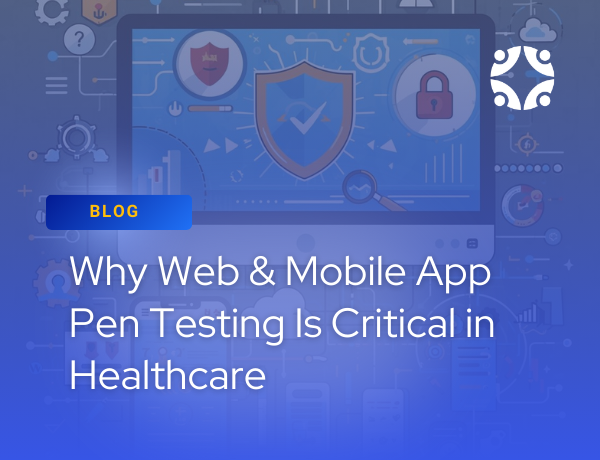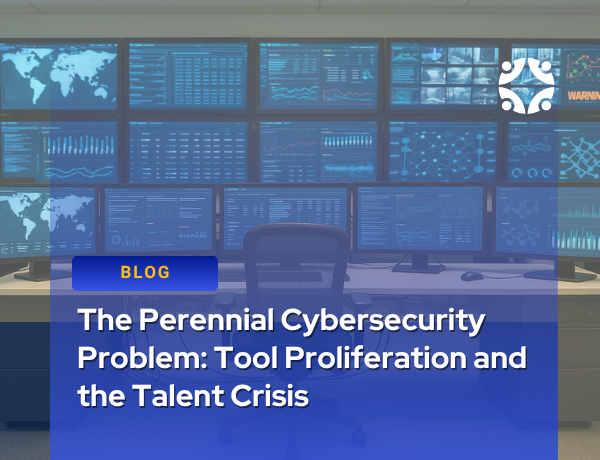In an era where the privacy of reproductive healthcare has become a topic for debate, healthcare organizations face growing fears and challenges over the potential misuse of sensitive patient data. Recent legal developments, coupled with the shifts following the Dobbs v. Jackson decision, have shown the urgent need for robust safeguards. Notably, the December 23, 2024 compliance deadline for the HIPAA Privacy Rule Final Rule to Support Reproductive Health Care Privacy offers a pivotal moment to address these concerns.
“This Rule is about ensuring confidence in the privacy of reproductive healthcare data. The stakes are high, but with preparation, compliance is achievable,” said Wes Morris, Senior Director of Consulting Services.
“It’s essential to think critically about how to operationalize these changes within your specific organizational context,” added Andrew Mahler, Vice President of Privacy & Compliance Services.
The new requirements don’t just demand updates to policies—they call for a cultural shift in how healthcare entities handle reproductive health data, from workforce training to operational transparency. This blog dives into the key updates presented in recent Clearwater webinars, the issues driving them, and actionable strategies to help healthcare providers comply while also protecting patient trust.
Understanding the Background
The changes to the HIPAA Privacy Rule are rooted in a series of significant legal and regulatory developments over the past few years. It is crucial for organizations to understand this timeline to contextualize their compliance efforts.
Key Milestones
- June 2022: The Supreme Court’s Dobbs v. Jackson decision overturned Roe v. Wade, sparking federal action to enhance privacy protections.
- July 2022: President Biden issued an executive order directing HHS to consider taking action to better protect information related to reproductive health care and bolster patient-provider confidentiality.
- April 2023: HHS’s Notice of Proposed Rulemaking introduced the changes.
- June 2024: The HIPAA Privacy Rule Final Rule to Support Reproductive Health Care Privacy becomes effective, with compliance required by December 23, 2024.
The Importance of Compliance
Failure to comply with these updates by the December deadline can result in penalties. While federal administration changes might influence policies, the compliance date remains enforceable under current law. Organizations must act now to align policies, systems, and training.
Key Provisions of the Updated Privacy Rule
The Final Rule introduces specific prohibitions and requirements designed to protect reproductive healthcare data. These provisions aim to prevent misuse of sensitive information, especially when there is a request related to law enforcement investigations.
Prohibited Disclosures
The updated rule prohibits using or disclosing PHI to:
- Conduct criminal, civil, or administrative investigations targeting individuals seeking or receiving lawful reproductive healthcare.
- Identify individuals who have received reproductive health services.
These prohibitions apply broadly, extending to all entities holding reproductive health data—even those that do not specialize in reproductive services. As Wes Morris noted, “It’s about the data itself, not just the type of entity holding it.”
Requirement for Attestation
The updated rule also establishes new documentation standards through attestation requirements. Covered entities must obtain a signed attestation for PHI requests to ensure disclosures are not for prohibited purposes. These attestations are required for:
- Health oversight activities.
- Law enforcement requests.
- Judicial or administrative proceedings.
- Coroners and medical examiners.
“You can’t rely on an attestation if you know or reasonably suspect it’s false.” – Andrew Mahler, VP of Privacy and Compliance
Organizations should use the model attestation provided by HHS as a template but adapt it to align with their internal processes and legal considerations.
Compliance Strategies
Effective compliance with the updated HIPAA rule requires a deliberate and multifaceted approach. Organizations must address the changes systematically, ensuring that their policies, training programs, and operational practices are robust enough to support compliance.
Defining Reproductive Health Data
Defining what constitutes reproductive healthcare data is one of the foundational steps for compliance. Organizations need to evaluate their current records, systems, and data workflows to ensure they encompass all relevant data elements.
“Defining reproductive healthcare data is not a one-and-done task. It must evolve with new treatments and technologies,” says Morris.
Using the Value Set Authority Center (VSAC) published by the National Library of Medicine as a starting point, organizations can:
- Identify relevant data elements.
- Integrate these definitions into EHR systems to ensure data accuracy and consistency.
- Regularly update these definitions to reflect changes in healthcare practices, treatments, and technologies.
The American Health Information Management Association also suggests organizations should use the VSAC as a starting point to determine what data they consider to be potentially related to reproductive health care, just as is done to determine their designated record set.
This process requires collaboration across multiple departments, including health information management (HIM), compliance, and clinical leadership.
Policy and Procedure Updates
Healthcare organizations must review and revise their policies and procedures to reflect the updated HIPAA rule. These updates should:
- Address new disclosure prohibitions and attestation requirements explicitly.
- Align with both federal and state laws to navigate conflicting regulations effectively.
- Provide clear, actionable guidelines for staff to follow in various scenarios.
Policies should be easy to understand and directly linked to training efforts to ensure workforce compliance.
Workforce Training
Comprehensive training is a cornerstone of effective compliance. It ensures that all employees understand the updated HIPAA requirements and their role in safeguarding reproductive healthcare data. Training programs should:
- Focus on new policies and their practical application.
- Clarify how to respond to requests for information under the updated rule.
- Highlight the ethical and legal consequences of non-compliance.
“Train your workforce as soon as policies are updated. Don’t wait for the next annual training cycle,” suggests Morris.
Training sessions should include real-world scenarios, such as handling law enforcement requests or addressing patient concerns about data privacy, to provide employees with practical, hands-on knowledge.
Revising Notice of Privacy Practices (NPP)
The Notice of Privacy Practices (NPP) is a critical document for communicating HIPAA compliance to patients. Under the updated rule, organizations must revise their NPP to:
- Clearly outline prohibited uses and disclosures of PHI.
- Provide specific examples of when an attestation is required.
- Include statements about the risks of redisclosure by third parties.
Although the deadline for NPP revisions is February 16, 2026, starting the process early can help ensure alignment with broader compliance efforts and avoid last-minute challenges.
Andrew Mahler added “Organizations that delay updating their NPP risk inconsistencies that can confuse patients and jeopardize trust.”
Practical Examples and Scenarios
Understanding how the updated rule applies in real-world situations is crucial for effective implementation. Below are scenarios that highlight the complexities organizations may face.
Real-World Situations
- Cross-State Requests: A provider in one state receives a request from a law enforcement official in a neighboring state that is much more restrictive on issues related to pregnancy termination. The provider must evaluate the legality of the request under both state and federal laws.
- Provider Reporting: A physician reports a patient planning to travel to another state for an abortion. This would be a prohibited disclosure under the new rule.
“These scenarios demonstrate the importance of both seeking legal counsel for unique situations as well as clear policies and procedures.” – Andrew Mahler
Such cases underscore the need for robust policies and regular workforce training to prepare employees for challenging situations. In addition, organizations should consider performing an audit or compliance review of the process to confirm the policies, procedures, and training have been implemented effectively.
Resources
Healthcare organizations can leverage various tools and resources to simplify compliance efforts and stay informed.
Key Tools
- VSAC: Define and maintain your reproductive health data set.
- Model Attestation: Customize and deploy HHS’s sample form for your organization.
- OCR Guidance: Leverage examples and clarifications provided by HHS.
Next Steps
- Collaborate with legal, compliance, and HIM experts to finalize policies.
- Deploy workforce training aligned with updated policies.
- Audit the implementation of policies and procedures, including NPPs, across all platforms to ensure consistency.
Conclusion
Adapting to The HIPAA Privacy Rule Final Rule to Support Reproductive Health Care Privacy is essential for protecting reproductive healthcare privacy and maintaining compliance. By proactively addressing policy, training, and operational adjustments, healthcare entities can navigate these changes effectively while safeguarding patient trust and data integrity.
To support healthcare providers further, our team has made additional resources available. The full webinar, which dives deeper into these compliance strategies and offers practical examples, is now available on demand. Watching the webinar will provide insights directly from HIPAA privacy experts, including actionable steps to ensure your organization meets the December 2024 compliance deadline.
If you have specific questions or need tailored guidance, we encourage you to reach out to one of our HIPAA experts. Our team is here to help you navigate these updates, address any unique challenges your organization may face, and ensure you’re fully prepared to comply with confidence.
Reach out to us with your comments and questions at info@clearwatersecurity.com.



